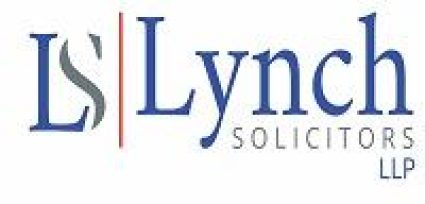
Tipp FM Legal Slot – 7th January 2014
John M. Lynch on Insolvency – Do that Deal or Bust!
[soundcloud id=’165871426′]
Download our – New Year’s Resolution 1: Insolvency – Do that Deal or Bust! – notes
This time last year the Personal Insolvency Act had just been signed into law. While it is still early days for the new Insolvency code, today, as part of a series of discussions, John Lynch advises listeners on New Year’s Resolutions for dealing with debt in 2014.
Ignoring the problem won’t make it go away!
Every year we start the legal slot with New Year’s resolutions discussions. This year it seems appropriate to start the year with an area that we have talked about quite a lot last year – the new statutory Personal Insolvency code.
The approach to dealing with debt and insolvency could be compared to resolutions we make to get fit; it is easy to talk about it, but not so easy to see it to a conclusion. In both situations it is relatively straightforward – if you reduce the intake and increase the output you are likely to get the result, in most cases.
Essentially, there are only two real options available to people who are dealing with unsustainable debt:
1) Come to an arrangement with the creditors to repay debts or part of it.
2) If you can’t come to a workable arrangement you are in a bankruptcy situation.
Similarly to exercise leading to fitness – with debt the only way you are going to lose it is if you try and come to a deal (which is the equivalent to exercise) or go with the more drastic route ( which is equivalent to a drastic diet) ; it’s either an arrangement or it is bankruptcy.
The Insolvency code is our way, in Ireland, of trying to address the problems that we’ve had over the last number of years. For five years we’ve had people trying to deal with unsustainable debt.
It is now relatively straightforward, but people need to be in that mind-set in January – we have had five years of talking about it and trying to make it work, we have had a year of both sides trying to come to an agreement and we have had a year of gearing up for a solution.
Now is the time to take action – either get a deal or force a deal.
There is no quick, fast solution – but there is a solution. The sooner you start, the closer you are to resolving it – like exercise and getting fit!
What steps should people take to address their debt problems?
Explore Your Options – They Do Exist!
The first port of call for those who are insolvent – cannot meet their debts as they fall due – is to contact a Personal Insolvency Practitioner who will assess their situation and advise on which arrangement, if any, would be suitable. The PIP acts as a go- between for the debtor, the creditors, the Insolvency Service and the Courts.
There are four options under the new regime:
• Debt Relief Notice (DRN)
• Debt Settlement Arrangement (DSA)
• Personal Insolvency Arrangement (PIA)
• Bankruptcy
One of the first things a PIP will do is get a Protective Certificate for those who are struggling financially. This would stop any creditors pursuing them for a limited amount of time to allow time for proposals and negotiations.
Personal Insolvency Practitioners will:
• Help those who are looking for relief under the Act in preparing a detailed financial statement;
• Use this information to advise on what debts can be included and put together proposals based on the individual circumstances ;
• Submit proposals to their creditors once the various options and consequences are discussed
• Negotiate with the creditors to find a solution which both parties can agree on;
• Organise a meeting of creditors to vote on the proposals;
• Organise the approval of any agreed arrangements with the courts and the registration with the Insolvency Service of Ireland.
A detailed plan will be given to those availing of relief under the Act setting out their obligations and specifying the time frame within which these obligations are to be met. The PIP will also be responsible for monitoring the payment arrangements for their duration.
What is the Prescribed Financial Statement (PFS) and who completes it?
For those wishing to avail of the new provisions one of the preliminary steps in doing so will be the completion of a Prescribed Financial Statement.
Effectively, the PFS is a full, frank and detailed statement of what people own, what they owe, and what the balance is.
If you are entering into a Debt Settlement Arrangement or a Personal Insolvency Arrangement the PFS will be completed with the help of your Personal Insolvency Practitioner and will form the cornerstone of any application made.
The purpose of the PFS is to give an accurate written account of all assets, debts, income and expenditure so that a true reflection of the financial position of the person seeking relief is outlined. This will enable the PIP to recommend different options for dealing with outstanding debts and to recommend which arrangement, if any, would be suitable.
The PFS would form the basis of calculating what repayments will be made to creditors and what portion of monies can be kept to maintain a reasonable standard of living.
The statement will contain a Statutory Declaration which must be signed by the applicant and witnessed by a Notary public, Commissioner for Oaths, Peace Commissioner or a practicing Solicitor. It will be an offence to sign this declaration without full disclosure or if any of the details in the Prescribed Financial Statement are incorrect or misleading.
A considerable amount of work can be involved in preparing the PFS and vouchers or receipts for all of the details provided will be required.
When did the Insolvency of Ireland begin accepting applications and have many people who are struggling with debt availed of the new service?
Take Control of Your Own Destiny!
The Insolvency Service of Ireland (ISI) began accepting applications from PIPs on 9th September 2013.
While there may still be a wait and see attitude, in general many people, as they are developing more of an understanding of what is involved, are exploring the new debt options introduced under the Personal Insolvency Act.
Through our seminars people learned more about what is involved; the impact it will have on your daily lives; whether you should have an informal arrangement with the bank, and if you do have an informal arrangement will there be write downs?; If you have an arrangement through the Insolvency Act will that involve a write down; if you go into bankruptcy what is the difference between bankruptcy and an arrangement; is it better to go into bankruptcy or an arrangement?
As a Personal Insolvency Practitioner (PIP) I have seen offers coming in from lenders and the banks putting proposals to people in debt, which is consistent with the Central Bank’s instructions.
When it comes to income arrangements is the reasonable standard of living the same across the board?
Know Your Limit!
Initially there was much debate about the minimum standard of living that people entering into insolvency arrangements are entitled to. I have found that many clients who I have been dealing with were living below the reasonable standard of living.
The Personal Insolvency code reduced the bankruptcy period to three years, but it also introduced a cross the board benchmark below which you should not be asked to live.
The reasonable standard of living will give you a level below which you can’t go, but neither the Assignee in Bankruptcy nor the Personal Insolvency Practitioner will marshal that; they won’t be arriving at people’s houses checking shopping lists!
The purpose of Personal Insolvency arrangements and the purpose of bankruptcy are not to punish people. The objective was from a political policy perspective was that the country – and its people – needed to get back up on its feet.
Have you found that the Insolvency arrangements apply only to people with certain levels of debt or can they apply to people from all walks of life?
You are Not Alone – Don’t be too hard on Yourself!
We have talked to a wide variety of people. We are dealing with people from all walks of life and all levels of income and debt from social welfare recipients to working professionals, from those who are dealing with relatively low levels of personal debts to those who owe millions with a portfolio of properties in negative equity.”
For more details on the area of Personal Insolvency and Bankruptcy visit: “Bankruptcy and Personal Insolvency Update”


